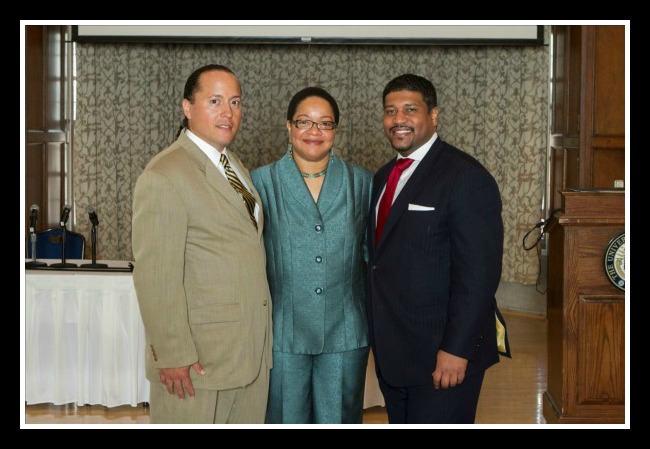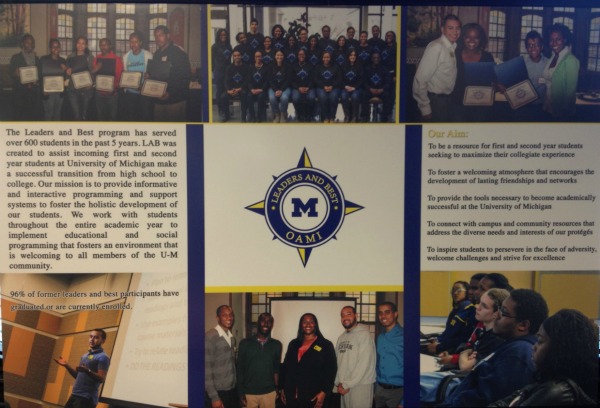 On April 16, 2013, I was one of three panelists, along with Andrew Adams, III, JD and Damon A. Williams, PhD, for an event celebrating the 25th Anniversary of the Office of Academic Multicultural Initiatives (OAMI) at the University of Michigan, Ann Arbor, where the theme was “Reflections on Diversity and Excellence – OAMI Through the Years”. The panelists were asked to answer 4 questions that touched on the event’s theme. My last post focused on a question that addressed success for ALL students. In today’s post, the focus remains on student success and best practices.
On April 16, 2013, I was one of three panelists, along with Andrew Adams, III, JD and Damon A. Williams, PhD, for an event celebrating the 25th Anniversary of the Office of Academic Multicultural Initiatives (OAMI) at the University of Michigan, Ann Arbor, where the theme was “Reflections on Diversity and Excellence – OAMI Through the Years”. The panelists were asked to answer 4 questions that touched on the event’s theme. My last post focused on a question that addressed success for ALL students. In today’s post, the focus remains on student success and best practices.
When I think about best practices or interventions, I think about my own experience as a first generation college student. Neither of my parents went to college and graduated with a degree. They were supportive of my going to college, but could not instruct me on how to navigate a complex organization like a predominately white university, because they had not gone through the experience themselves. Both of my parents offered the best advice they could; however, it was not enough to ensure my success. I needed help, and I was fortunate in that I participated in the Office of Special Programs – Upward Program at the University of Chicago, where the staff taught me how to be a good college student. The program provided role models, tutoring, intensive classes that required a lot of writing, Calculus, and regular progress reports. Most important of all, there was always someone to talk to who cared about my success.

When I had the opportunity to develop a student success program, such as the Pathways to Student Success and Excellence Program which is now called Leaders and Best, I tried to duplicate these same best practices and incorporate critical interventions. While educational leaders try to make their mark with new and improved approaches, the old fashioned approaches still work:
-
Mentoring from peers, faculty, staff and alumni who can share their experiences, successes and challenges that were overcome.
-
Tutoring and supplemental instruction for those courses that continue to weed out students from STEM majors and professions that leave little room for students to make mistakes.
-
Assessing progress through midterm grades, complemented by aggressive interventions that don’t allow students to fall between the cracks.
-
Providing employment/career opportunities that reinforce a strong work ethic and a chance to give back…lift as you climb.
As you reflect on the question below, think about what worked for you; consider what works for students who are the first in their family to go to college; When education has been used as a means to strip people of their language, culture, and family, such as with Native Americans in the United States and Aboriginal People in Canada through boarding schools, should we expect the same practices to work? I am eager to hear from you. Share your thoughts and reflections by leaving your comments* below:
What are some positive institutional interventions/best practices
that have worked well to advance diversity and enhance student success?

*Note: You will need to register for an Institutional Diversity Blog account in order to comment, but you can get started right away by clicking here, or visiting our FAQ page for more help. Also, check out this video on "Registering for an Account on The Institutional Diversity Blog".
Leave a Reply
You must be logged in to post a comment.